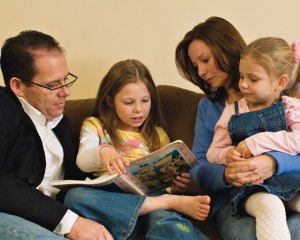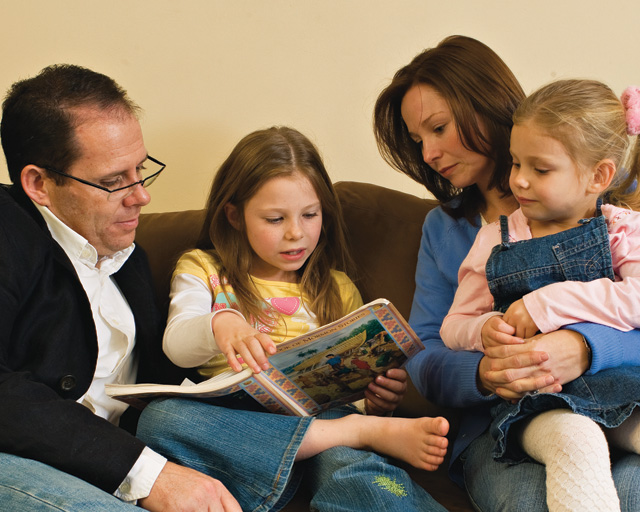In a previous post I talked about the importance of improving extended family relationships and mentioned a few ways that this might be done. I’d like to discuss one of those ways now: starting a family newsletter.
The idea of a family newsletter was another novelty I encountered upon getting married. The members of my extended family usually called each other on birthday’s and that was about the extent of our contact during the year, excepting the occasional visit.
 After marrying my husband I discovered that not only did his family have regular parties and game nights, they also kept in touch with distant relatives by sending out a quarterly newsletter. We loved receiving that large manilla envelope every four months and reading about the lives of our relatives around the country in their own words. And of course it was fun to write our own little addition detailing new church callings, jobs and other activities. I have no doubt you’ll love starting your own family newsletter. And it’s much simpler than planning a reunion.
After marrying my husband I discovered that not only did his family have regular parties and game nights, they also kept in touch with distant relatives by sending out a quarterly newsletter. We loved receiving that large manilla envelope every four months and reading about the lives of our relatives around the country in their own words. And of course it was fun to write our own little addition detailing new church callings, jobs and other activities. I have no doubt you’ll love starting your own family newsletter. And it’s much simpler than planning a reunion.
First you’ll need to decide on a name for your publication. Our family newsletter is very simply titled, Owens Family Newsletter with the subtitle, The Descendants of Joseph Alma Owens and Alice Elvaretta Harris. You can keep it simple like that or be more creative. You could even ask family for their ideas if you’re having a hard time coming up with your own.
Additional details that you’ll want to think through before gathering submissions for the newsletter are:
* How often will it be published
* In what format will it be published (email, hard copy or both)
* From whom will submissions be gathered/for whom will it be published (maternal or paternal side of the family or both, all descendants of grandparents on down or great-grandparents on down, etc.)
* A set deadline for submissions and target deadline for actual mailing
To get your newsletter up and running, it might be best to start with submissions from your immediate family or other relatives in the area. Then you can send out the first newsletter to distant relatives with a note explaining what you are doing and the actual first copy so they can see how it works and then decide if they want to participate and/or write their own update about themselves. Be clear in communicating your vision for keeping in touch but be respectful of your families ideas.
In, Getting the Whole Family on One Tree,” Ensign, Feb 1981, 42 Godfrey J. Ellis spoke of the difficulties and joys of trying to organize a family newsletter within his “fractured” family. He said:
“It seemed to us that organization had to begin with communication, so we decided to start a family newsletter called, harmlessly enough, The Family Tree. My wife and I spent hours planning such noncontroversial features as “Family Member of the Month” and “Family Talent Spotlight.” But then we discovered that some of our extended family members don’t believe in the concept of family! Rather, they believe that one’s family should be humanity, or especially those who believe in Christ. Although it was difficult for us to understand, some family members of different religious beliefs see the family unit as a myopic concern that must be overcome and outgrown.
The problems continued. Should the newsletter contain news of birthdays and Halloween activities? Would we talk of Christmas excitement and the birth of our Savior? Some family members don’t believe in birthdays, Halloween, or Christmas! Could we put in President Carter’s proclamation declaring the week of November 19 as “National Family Week”? Over half the family members do not live in the United States.
We found the key to be sincere respect for the beliefs of others and keen sensitivity to each member’s feelings. Family members need to feel that the organization includes them, regardless of where they live, where they fit in the family structure, or what they may believe. “
Don’t forget to ask for the Lord’s council as you work on possibly beginning a very valuable tradition within your family


